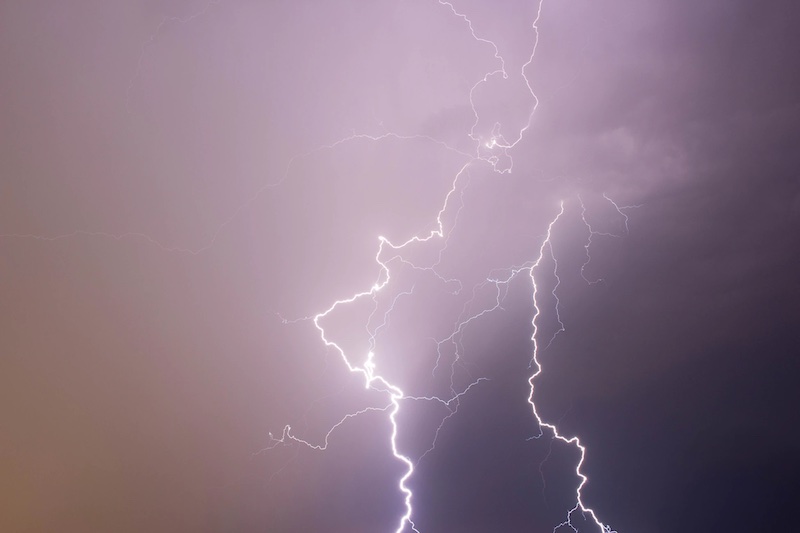Storms
Storms and severe weather - strong wind, lightning strikes, rain, flooding and hail can occur at any time.
Not all storms are severe, yet they are one of the most costly natural disasters in Australia causing extensive damage each year.
Being prepared for storms
Storms can happen at any time, and without much warning, so the best way to protect your family, home, business and assets from damage and loss is to be prepared. Insurance helps to do this.
Assess your risk. Your local state emergency services group will be able to provide advice on how to prepare for storms in your area.
Prepare a disaster supply kit, with cash, food, water, toiletries, medication, a household inventory of your belongings, copies of important documents, protective clothing, a radio and a torch – and batteries for both.
Once a storm is heading towards your local are, it is usually too late to check your insurance cover, or buy a policy. To ensure you are prepared for storms:
- Check how much your property is insured for and update it if you do not have enough insurance.
- Review your insurance policy. Find out what is included in the policy and understand its inclusions and exclusions. Always contact your insurer if you have questions.
- Most insurers regard rainwater runoff as part of storm cover but some insurers won’t cover rainwater runoff or storm surge when the customer chooses not to take flood cover. These options are explained in the Product Disclosure Statement (PDS) for your policy.
- Check you have comprehensive car insurance. Remember that compulsory third-party insurance does not cover damage to your vehicle.
- Prepare a room-by-room inventory and take pictures of the contents of your home. This inventory will help insurers speed up a claim in the event of a loss caused by a storm.
- Check that guttering and pipes are not blocked and that the roof is in good condition.
- Have waterproof bags ready to protect clothing and important documents from storm damage.
What to do if a storm is approaching
If a storm is approaching, there are practical steps you can take to stay safe and minimise damage to your property during a storm, including:
- Move your car under cover or away from trees.
- Remove dead or rotting trees and trim branches that overhang property (do it safely and remember that you may require a council permit).
- Secure all loose items outside your property, such as garden furniture, umbrellas, sheds, trampolines and cubby houses.
- Close shutters on doors and windows. If there are no shutters close window blinds, drapes and curtains.
- Unplug non-essential electrical equipment, install surge protectors and be prepared to turn off mains power, water, gas and solar power well before the storm arrives.
- Have your disaster supply kit on standby.
- Listen to ABC local radio for updates.
- Decide how to protect your pets.
- While conditions are severe, stay indoors and keep clear of windows.
During a storm
Severe storms can destroy homes, damage infrastructure, fell trees and leave communities without power, gas and mains water.
Once you know a storm is approaching, you should enact your disaster plan, follow the instructions of local authorities and emergency services and remain calm.
The Bureau of Meteorology provides the latest warnings, updates and information about storms and in most parts of Australia, ABC local radio serves as the natural disaster broadcaster.
What to do in the immediate aftermath
- Safety is the priority - don’t do anything that puts anyone at risk.
- Do not drive your vehicle if it has suffered water damage.
- If water has entered the property, don't turn on the electricity until it has been inspected by an electrician.
- Contact your insurance company as soon as possible to lodge a claim and seek guidance on the claims process.
- Let your insurer know if you've sustained roof damage.
Cleaning up afterwards
- Remain mindful of safety.
- Before you start your clean-up take photos or video of damage to your property and contents / possessions to support your claim.
- Remove any water damaged items from the property that may pose a health risk such as soft furnishings and carpet. Take photos or keep small samples of water damaged items to support your insurance claim.
- Don’t throw away items that could be repaired, unless they pose a health risk.
- Make a list of each damaged item and if possible include a detailed description, such as brand, model, and serial number.
- Speak to your insurer before you attempt or authorise any building work, including emergency repairs, and ask for the insurer’s permission in writing, as unauthorised work may not be covered by your policy.











